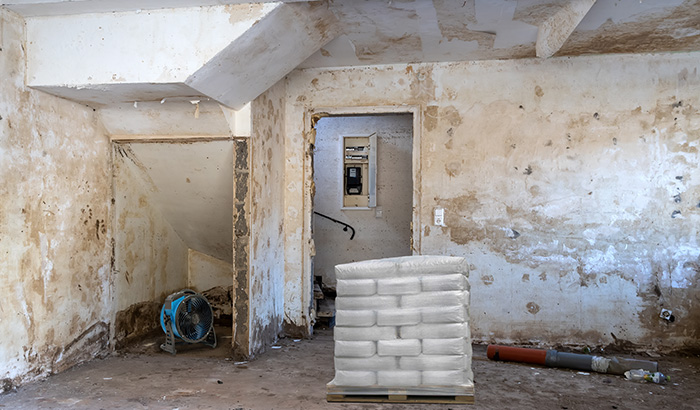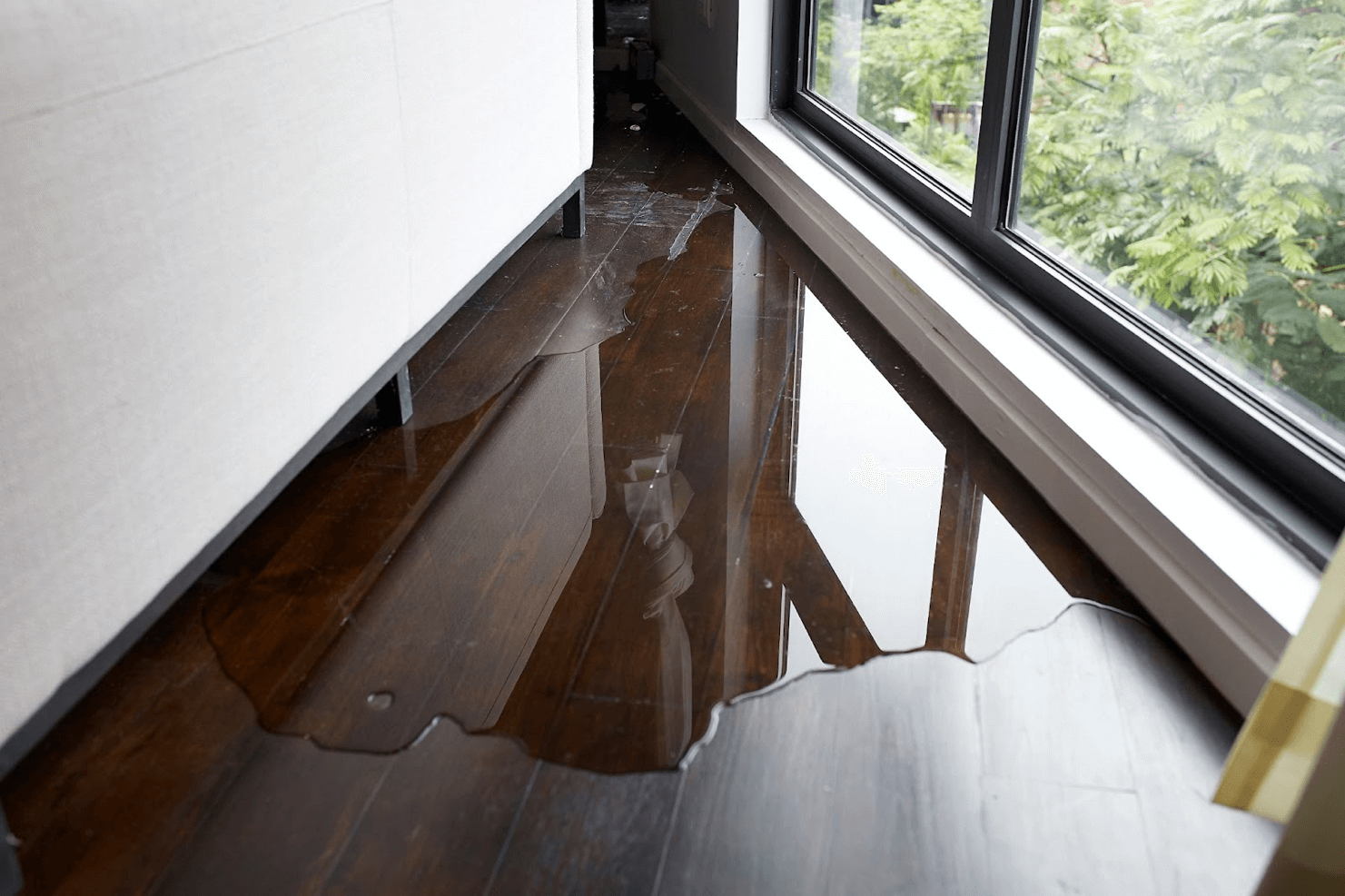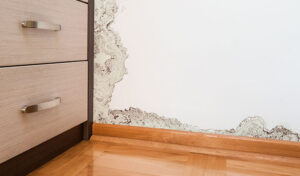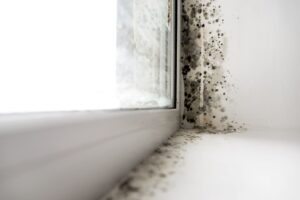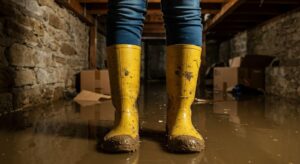Water damage can wreak havoc on your home, leading to costly repairs and potential health hazards. Fortunately, there are proactive steps you can take to prevent water damage and safeguard your property.
In this blog, we will share five essential tips to help you prevent water damage and maintain the integrity of your home. Keep reading to learn about our 5 tips on how to prevent water damage.
1. Regularly Inspect and Maintain Your Plumbing System.
Regularly inspecting and maintaining your plumbing system is crucial in preventing water damage. Here are the steps to follow:
- Check for Leaks: Look for any visible signs of leaks, such as water stains, wet spots, or dripping water. Inspect pipes under sinks, behind toilets, and in the basement. Additionally, listen for any unusual sounds like dripping or running water.
- Monitor Water Pressure: High water pressure can put stress on your plumbing system and increase the risk of leaks. Use a pressure gauge to measure the water pressure at different faucets in your home. If the pressure exceeds 80 PSI, consider installing a pressure regulator.
- Inspect Faucets and Fixtures: Check all faucets, including kitchen and bathroom sinks, showers, and bathtubs, for any leaks or drips. Ensure that all fixtures are properly sealed and functioning correctly.
- Test Toilets: Place a few drops of food coloring in the tank to check for toilet leaks. If the color appears in the bowl without flushing, it indicates a leak that needs to be repaired.
- Examine Appliances: Inspect appliances that use water such as dishwashers, washing machines, and refrigerators with ice makers. Look for any signs of leaks, loose connections, or damaged hoses.
- Maintain Water Heater: Flush the water heater annually to remove sediment buildup and improve efficiency. Inspect the tank and connections for any signs of leaks or corrosion.
- Insulate Pipes: Ensure that exposed pipes, especially those in unheated areas like basements or attics, are properly insulated. This helps to prevent freezing and potential pipe bursts during winter months.
2. Install Proper Ventilation Systems.
Installing proper ventilation systems is essential for preventing moisture buildup that can lead to water damage in a home. Here are the steps to follow:
- Identify High-Moisture Areas: Determine the areas of your home that create a significant amount of moisture, such as bathrooms, kitchens, laundry rooms, and attics.
- Install Exhaust Fans: Install exhaust fans in high-moisture areas to remove moist air and reduce humidity levels. Choose an adequately sized fan for the room and ensure it is installed in the right location.
- Use Dehumidifiers: Use dehumidifiers to control moisture levels in high-humidity areas. These devices work by removing excess moisture from the air and collecting it in a reservoir. Choose an adequately sized dehumidifier for the room and an automatic shut-off feature for when the reservoir is full.
- Consider Attic Ventilation: Proper attic ventilation is important in allowing warm, moist air to escape, preventing roof damage and mold growth. Install ridge vents or gable vents to provide adequate ventilation, and ensure insulation is not covering the vents.
3. Keep Gutters and Downspouts Clean.
Keeping gutters and downspouts clean is vital in preventing water damage to your home. Here’s how to do it:
- Start with the Sownspout: Use a garden trowel or scoop to clear any debris or leaves blocking the top of the downspout. If the blockage is severe, you may need to use a plumber’s snake or a high-pressure hose attachment to break it up.
- Clear the Gutters: Begin removing debris from the gutters, placing it into the bucket. Start at one end and work your way toward the downspout. Be thorough and ensure all leaves, twigs, and dirt are removed.
- Flush with Water: Once the gutters are clear, use the hose with a nozzle attachment to flush out any remaining residue. Start at the end farthest from the downspout and work your way towards it. This will ensure any small debris or dirt is washed away.
- Check for Leaks or Damage: While cleaning, inspect the gutters for any damage, such as cracks, loose joints, or sagging sections. Ensure that the gutters are securely attached to the fascia board.
- Clean the Downspout Base: Check the base of the downspout where it connects to the underground drainage system. Make sure it is clear of debris, and consider installing a downspout strainer or leaf guard to prevent future clogs.
- Regular Maintenance: It’s recommended to clean your gutters and downspouts at least twice a year, ideally in the spring and fall. However, depending on the number of trees around your home, you may need to perform this task more frequently.
By following these steps and keeping your gutters and downspouts clean, you can ensure proper water flow and prevent water damage to your home’s foundation, walls, and landscaping.
4. Maintain Proper Landscape Grading.
Maintaining proper landscape grading is essential in preventing water damage to your home’s foundation, walls, and basement. Here are the steps to follow:
- Identify the Problem Areas: Observe where water accumulates in your yard. Any area with standing water or soggy ground needs attention.
- Determine the Appropriate Slope: The ground around your home’s foundation should slope away from the house at least 6 inches in the first 10 feet. A 2-3% slope is ideal.
- Use soil: To ensure proper grading, use screened topsoil to fill in any low areas. Tamp down the soil with a hand tamper or a plate compactor.
- Plant Grass or Other Ground Covers: After the soil is tamped down, plant grass seed or other ground cover plants to stabilize the soil and prevent erosion. Adding mulch can also help retain moisture and prevent soil erosion.
- Install Drainage: For areas where water pools even with proper grading, install a drainage system like a French drain or a dry well. This system captures water and diverts it away from the area.
- Inspect Regularly: Inspect your yard regularly to ensure proper grading and drainage systems are working and prevent the reoccurrence of water accumulation.
- Hire a Professional: If you are unsure about how to do proper landscape grading or encounter significant grading problems, call a professional landscaper or foundation repair contractor.
By following these steps, you can keep your yard correctly graded, reduce the risk of water damage to your home, and maintain healthy plant growth. Remember to regularly inspect and address any grading problems promptly.
5. Use Water Leak Detection Devices.
Water leak detection devices can help you identify and address water leaks in your home before they cause significant damage. Here are the steps to use these devices effectively:
- Choose the Right Device: There are different types of water leak detection devices available, including smart systems, water sensors, and leak detection cables. Select the device that suits your needs and budget.
- Read the Instructions: Familiarize yourself with the user manual or instructions that come with the device. Each device may have specific setup and usage instructions.
- Determine Optimal Placement: Identify areas where water leaks are most likely to occur in your home. Install water leak detection devices in these areas. For example, water sensors are typically placed near potential leak sources, while leak detection cables can be installed around pipes or along potential water flow paths.
- Connect or Activate the Device: Depending on the type of device you have, you may need to connect it to a power source, connect it to a hub or smart home system, or activate it manually.
- Test the Device: Perform a test to ensure the water leak detection device functions correctly. Follow the instructions to activate the test mode or use a controlled water source like a glass of water to trigger the sensor. Verify that the device detects the water and alerts you accordingly.
- Monitor and Respond to Alerts: Once the device is set up and functioning, keep an eye on any alerts or notifications it provides. When an alert is received, investigate the source of the leak and take necessary actions, such as shutting off the water supply, repairing the leak, or contacting a professional plumber for assistance.
- Regular Maintenance: Regularly check the functionality and batteries of water leak detection devices that require battery power. Replace batteries as needed, and ensure the devices are clean and free from any obstructions that could hinder their effectiveness.
Remember that water leak detection devices are not foolproof, and it’s important to regularly inspect your home for any signs of leaks or moisture. These devices can complement your efforts to prevent water damage, but proactive maintenance and quick response to alerts are still crucial.
Water Damage Restoration With Total Flood and Fire Restoration
At Total Flood and Fire Restoration, we understand how devastating water damage can be. That’s why we offer comprehensive water damage restoration services to help you get your home or business back to normal as quickly as possible.
Call Total Flood and Fire Restoration today or visit our website to learn more about how we can help you overcome water damage and restore your property quickly and effectively. Don’t let water damage ruin your home or business – contact Total Flood & Fire Restoration for all your restoration needs.

